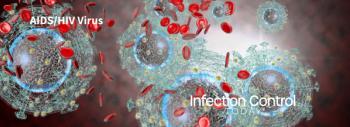
Survey Reveals OR Nurses Concerned about Complications Associated with Powdered Gloves
ANAHEIM, Calif. -- Seven out of 10 operating room nurses attending this year’s Association of PeriOperative Registered Nurses (AORN) 55th Congress in Anaheim, Calif. who responded to an industry survey reported being “very concerned” about the surgical complications related to glove powder. However, only 30 percent reported their facility was powder-free. Powdered gloves have been implicated as the largest single contributor to latex aeroallergen levels in healthcare facilities.
In a random sample of 543 nurses at the AORN Congress, Molnlycke Health Care, manufacturer of the Biogel® glove line, asked attendees about glove powder and latex safety issues, both major concerns in the operating room today.
According to the survey, 94 percent of respondents have a “moderate” to “high” level of awareness of the potential surgical complications related to the use of powdered surgical gloves, but only 57 percent correctly identified all four of the leading complications: latex allergic reactions, latex sensitization, post-operative surgical site infection and adhesion formation.
“Many of us assume that the complications associated with powdered glove use are well understood by perioperative practitioners,” says Carolyn Twomey, RN, global vice president of clinical and clinical research for Molnlycke Health Care. “Clearly, there is a need for education about the full range of complications related to powder. Although very serious, latex allergies and occupational asthma are not the only issues. Patient complications from powder left behind in surgical wounds can include adhesions, delays in wound healing, pyrogenic reactions and the fostering of infection. By understanding all of these complications, practitioners can be proactive in reducing patient risk and improving patient outcomes.”
Powdered latex gloves should not be used for surgical procedures because the cornstarch powder contributes to delayed wound healing and postoperative complications including adhesions, granulomas, increased scar formation and increased risk of infection All of these contribute to longer hospital patient stays and increased healthcare costs. Cornstarch powder on surgical and exam gloves promotes the transfer of allergenic latex proteins. For healthcare workers, the risks of powder-related complications including respiratory symptoms and asthma, as well as hand dermatitis, all lead to latex sensitization, are major concerns. These all contribute to lost healthcare employee productivity and disability, for which the risk can be significantly decreased with the use of powder-free gloves.
Nearly a dozen professional healthcare organizations, including AORN, support the use of powder-free, low-protein surgical gloves, and recommend the use of latex-free glove alternatives for situations in which a latex-free solution is necessary, such as in the care of a latex-sensitive patient or for a latex- sensitive practitioner. Hospitals that have chosen powder-free, low-protein latex gloves have demonstrated reductions in latex allergies and occupational asthma. In fact, many have reported the return to work of latex-sensitive practitioners, who previously could not work.
Powder in latex gloves and latex allergies in general have continued to bring the issue of “latex-safe” vs. “latex-free” healthcare facilities to the forefront. In February, The Wall Street Journal reported on facilities aiming to become latex-free. Eliminating all latex from a healthcare environment presents unique challenges due to the number of medical products that contain latex. It is recommended that facilities consider all latex options and the needs of the staff before making a latex-safe or latex-free decision.
“Finding an industry partner who is interested in helping your healthcare organization fully understand the facts supported by evidence-based literature is essential to making a wise decision for the long-term,” Twomey adds.
Molnlycke Health Care provides healthcare facilities with a unique team approach that results in tailored, well-rounded glove solutions. This includes a full-line of powder-free, low-protein latex and non-latex glove styles to address all specialty needs. As reported in The Cochrane Review, the Biogel patented, puncture indication glove system (in either latex or non-latex) provides protection and an alert system for barrier breach which increases practitioner safety.
Source: Molnlycke Health Care US, LLC
Newsletter
Stay prepared and protected with Infection Control Today's newsletter, delivering essential updates, best practices, and expert insights for infection preventionists.






